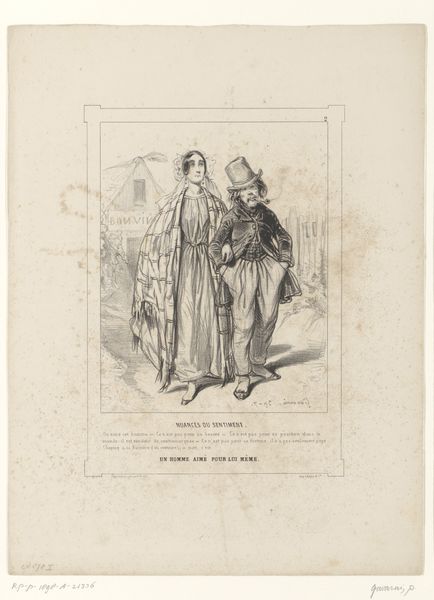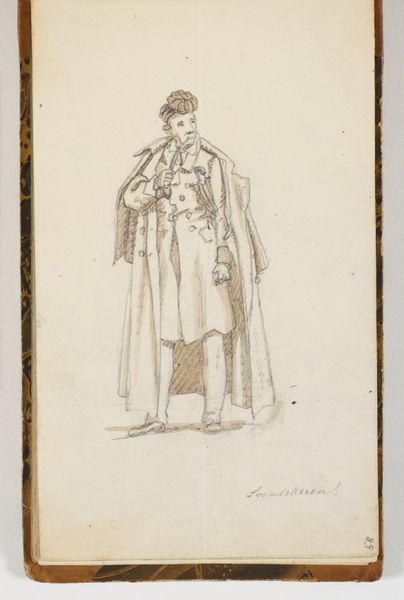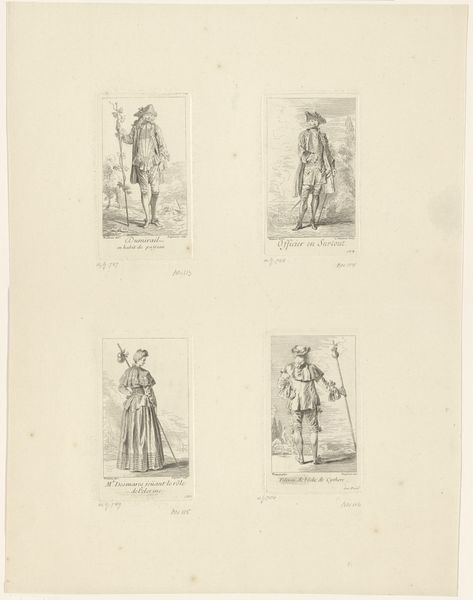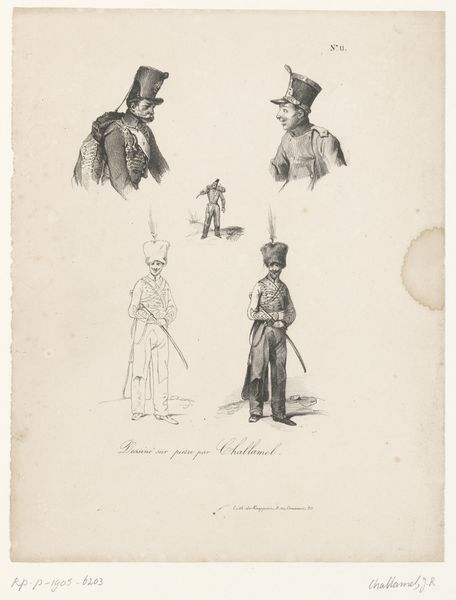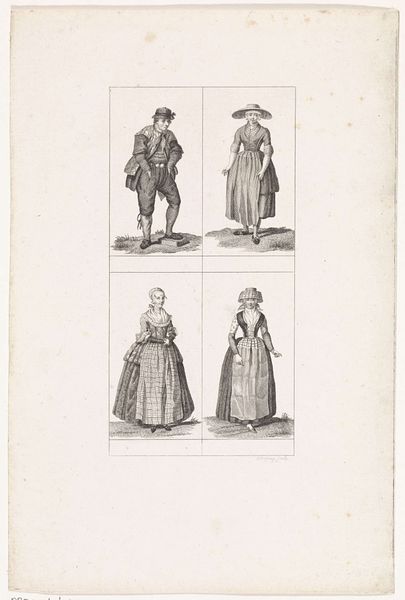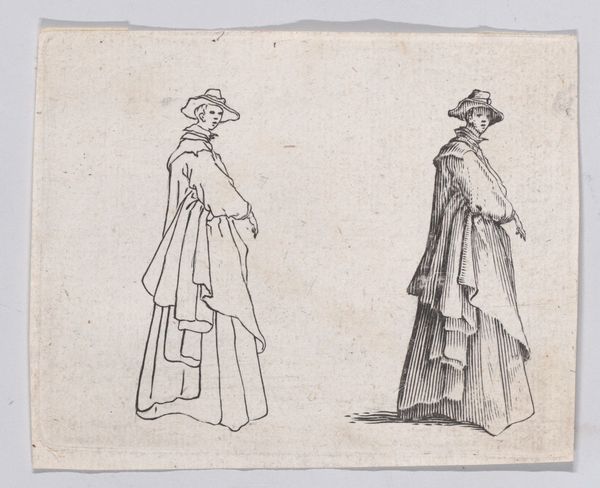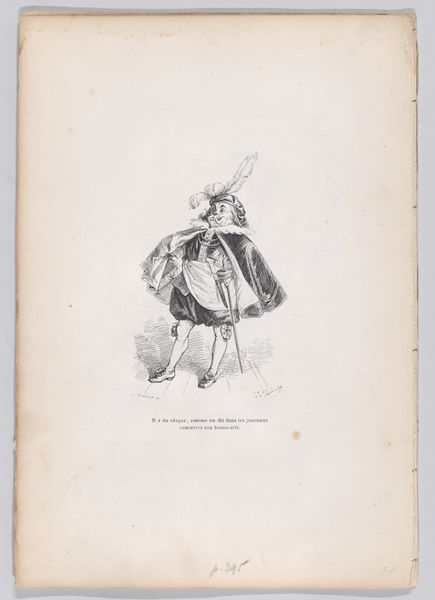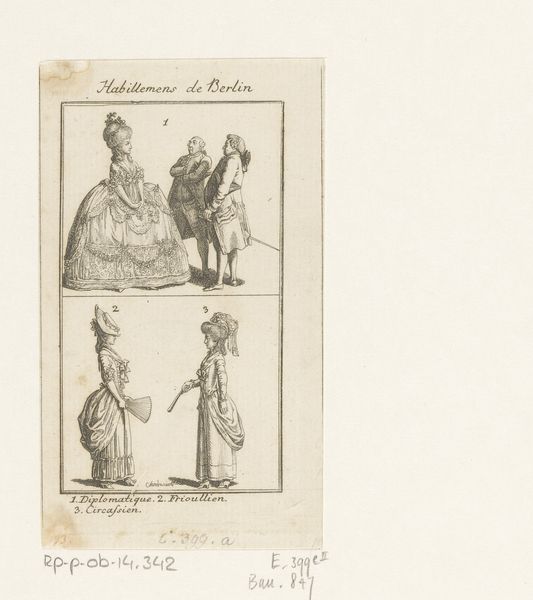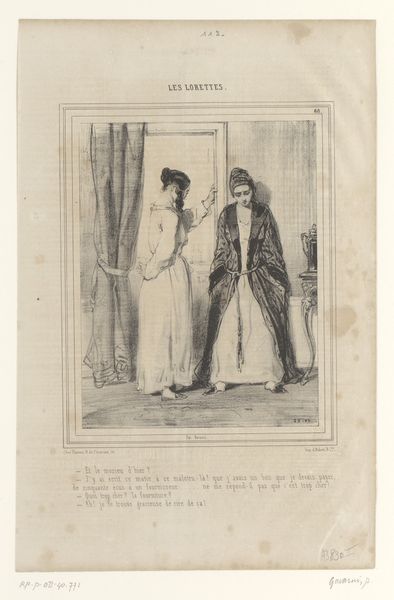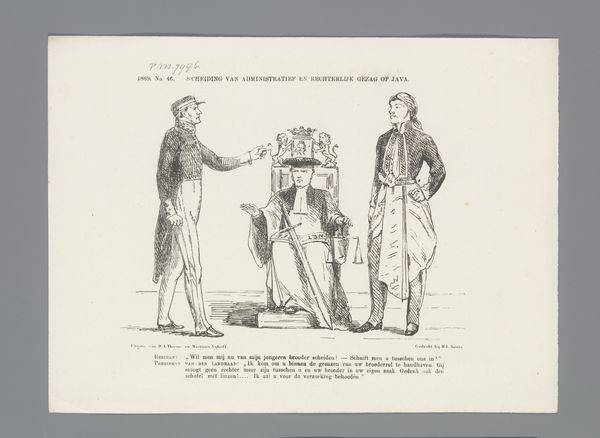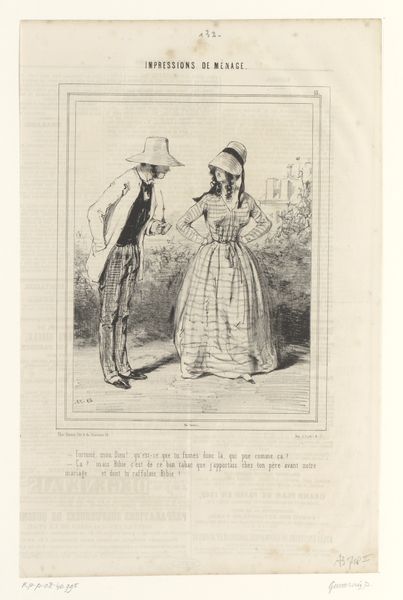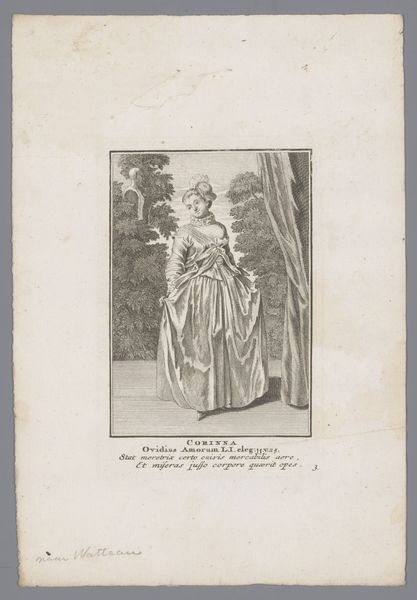
Mary, Queen of Scots and Francis II, King of France (from "Collection des costumes, armes et meubles pour servir à l'histoire de France depuis le commencement du Veme siècle jusqu'à nos jours," plate 268) 1822 - 1837
0:00
0:00
drawing, print, engraving
#
portrait
#
drawing
# print
#
history-painting
#
academic-art
#
engraving
Dimensions: Sheet: 11 1/16 × 14 3/4 in. (28.1 × 37.5 cm)
Copyright: Public Domain
Curator: This engraving by Horace de Viel-Castel, created between 1822 and 1837, depicts Mary, Queen of Scots and Francis II, King of France. Editor: The figures look stiff, almost mannequin-like, but the detail in their costumes is striking. There's a clear emphasis on line and pattern, creating a sense of formality. Curator: Absolutely, and this formality reflects the social conventions of depicting royalty. Viel-Castel situates these figures within the complex history of France, drawing on existing portraits to evoke a specific era and power dynamic. Note how Mary, Queen of Scots, born into Scottish royalty, became Queen consort of France through her marriage to Francis. It's all about legitimizing narratives of power. Editor: Looking closer, I’m drawn to the contrasting textures. The crisp lines of the figures against the flatness of the background create a stark visual hierarchy. Curator: Exactly! The emphasis on dress as a signifier of power is critical. Look at the distinct fabrics and how the textures define the subjects in an era of absolute monarchy and emergent nation states. Mary and Francis are visually and materially defined as people of high rank in society. It subtly engages debates about gender, power, and historical memory. Editor: It almost anticipates the later explorations of simulacra by artists like Magritte—these are representations of representations. The composition directs the eye. It feels almost diagrammatic, wouldn't you agree? Curator: I concur. Much of this diagrammatic approach served the purpose of codifying aristocratic life for contemporary consumption—think of it as celebrity journalism. Also remember the ongoing tensions between France and Scotland as background context and its influence on these figures' position. The visual dialogue goes beyond the aesthetics into how these portraits were used to forge both national and gendered identities. Editor: It’s remarkable how the artist managed to create such a precise rendition through the medium of engraving. It’s the controlled, repetitive strokes that allow for the level of refinement. Curator: Indeed. Much is communicated about cultural ambition through such "objective" reproductions. So what remains, when everything said and done? Editor: I am struck most by how successfully a black and white print conveys wealth and royalty through minute details, composition and lines. Curator: Agreed. What a reminder to contemplate what we wear, perform and inherit.
Comments
No comments
Be the first to comment and join the conversation on the ultimate creative platform.
